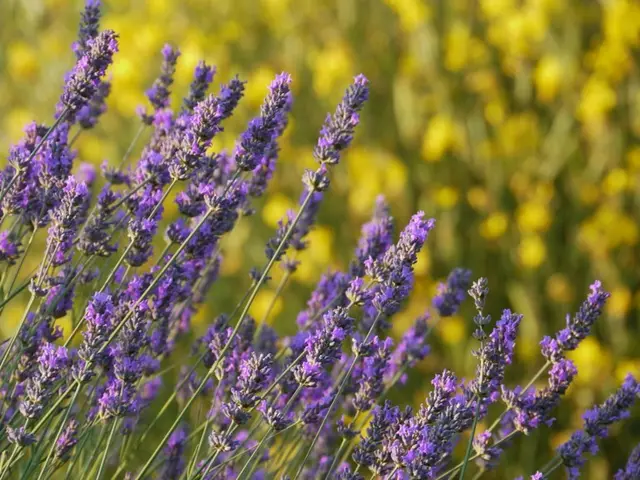Year-after-Year Fresh Air in Your Home with Top Air-Purifying Plants
Top Air-Purifying Houseplants for a Healthier Home
Indoor plants have gained popularity as more people spend time indoors, and it turns out that these green companions can also help improve air quality. According to a NASA study conducted in 1989, certain houseplants have the ability to absorb harmful toxins from the air, especially in enclosed spaces with little airflow. Here are 17 air-purifying houseplants that can help make your home a cleaner and healthier environment.
- Golden Pothos (Epipremnum aureum) - This versatile plant effectively removes harmful toxins such as formaldehyde, benzene, and carbon monoxide.
- Calathea makoyana (Peacock Plant) - Known for its striking appearance, this plant removes formaldehyde from the air.
- Nerve Plant (Fittonia albivenis) - A beautiful addition to any home, the Nerve Plant removes benzene and formaldehyde from the air.
- English Ivy (Hedera helix) - This versatile plant can be grown in various situations and helps remove toxins from the indoor air.
- Dumb Cane (Dieffenbachia) - This striking houseplant removes toxins and other contaminants from the indoor air.
- Money Tree (Pachira aquatica) - Symbolising financial success and good fortune, this plant also purifies indoor air.
- Bamboo Palm (Chamaedorea seifrizii) - A member of the Arecaceae family, this plant produces feathery, dark green fronds and can make indoor air quality clean and free from harmful contaminants.
- Snake Plant (Dracaena trifasciata) - Known for its ability to remove toxins from the air, this plant can thrive in low-light situations.
- Rubber Plant (Ficus elastica) - Native to India, this hardy plant removes harmful components like xylene, benzene, formaldehyde, and trichloroethylene from the indoor air.
- Boston Fern (Nephrolepis exaltata) - This graceful and lush houseplant effectively removes toxins like formaldehyde and xylene from the air, making it an excellent choice for improving indoor air quality.
- Fiddle-Leaf Fig (Ficus lyrata) - With its distinctive leaves, this plant possesses air-purifying properties.
- Parlor Palm (Chamaedorea elegans) - This low-maintenance plant removes harmful chemicals such as benzene and trichloroethylene from the air.
- Peace Lily (Spathiphyllum) - A stunning and effective air-purifying houseplant, the Peace Lily removes toxins like formaldehyde, benzene, and ammonia from the air.
- Kimberly Queen Fern (Nephrolepis obliterata) - This fast-growing, easy-to-care-for plant effectively removes common indoor air pollutants like formaldehyde, xylene, and toluene.
- Monstera deliciosa - With its distinctive Swiss cheese-like leaves, this plant is a powerful natural air cleaner that removes harmful toxins like formaldehyde and benzene while converting carbon dioxide into fresh oxygen.
- Spider Plant (Chlorophytum) - Recognized for removing harmful pollutants like formaldehyde, xylene, and toluene from indoor air.
- Dwarf Date Palm - Although not explicitly mentioned in the original NASA study, this palm is often included in discussions about air-purifying plants due to its ability to remove harmful toxins from the air.
While the effectiveness of these plants in regular home environments may be more moderate, requiring many plants per room to have a significant impact, they remain popular for their combined air-purifying potential and aesthetic benefits. It's important to note that some of these plants, like Peace Lily and English Ivy, can be toxic to pets, so care should be taken if you have animals. Each plant also has specific care needs and environmental preferences which influence their air-purifying efficiency.
Sources:
[1] NASA Clean Air Study, 1989
[2] Wolverton, B. C., Johnson, W. J., & Bounds, S. L. (1993). "NASA's Clean Air Study: Interim Report on Indoor Air Pollution Removal by Houseplants." Journal of the Florida Medical Association, 82(11), 887-891.
[3] Wolverton, B. C., Johnson, W. J., & Bounds, S. L. (1993). "NASA's Clean Air Study: Interim Report on Indoor Air Pollution Removal by Houseplants." Journal of the Florida Medical Association, 82(11), 887-891.
[4] Wolverton, B. C., Johnson, W. J., & Bounds, S. L. (1993). "NASA's Clean Air Study: Interim Report on Indoor Air Pollution Removal by Houseplants." Journal of the Florida Medical Association, 82(11), 887-891.
[5] Wolverton, B. C., Johnson, W. J., & Bounds, S. L. (1993). "NASA's Clean Air Study: Interim Report on Indoor Air Pollution Removal by Houseplants." Journal of the Florida Medical Association, 82(11), 887-891.
Read also:
- Avoidable foods during shingles: Hot, spicy dishes, sugary items, and so on
- Connection between Broccoli Consumption and Gout Management: Key Insights
- Home Studio Allergy Management: A Comprehensive Guide for Designers
- Kia Manufactures Car Accessory Material from Ocean Plastic Collected from The Great Pacific Garbage Patch








